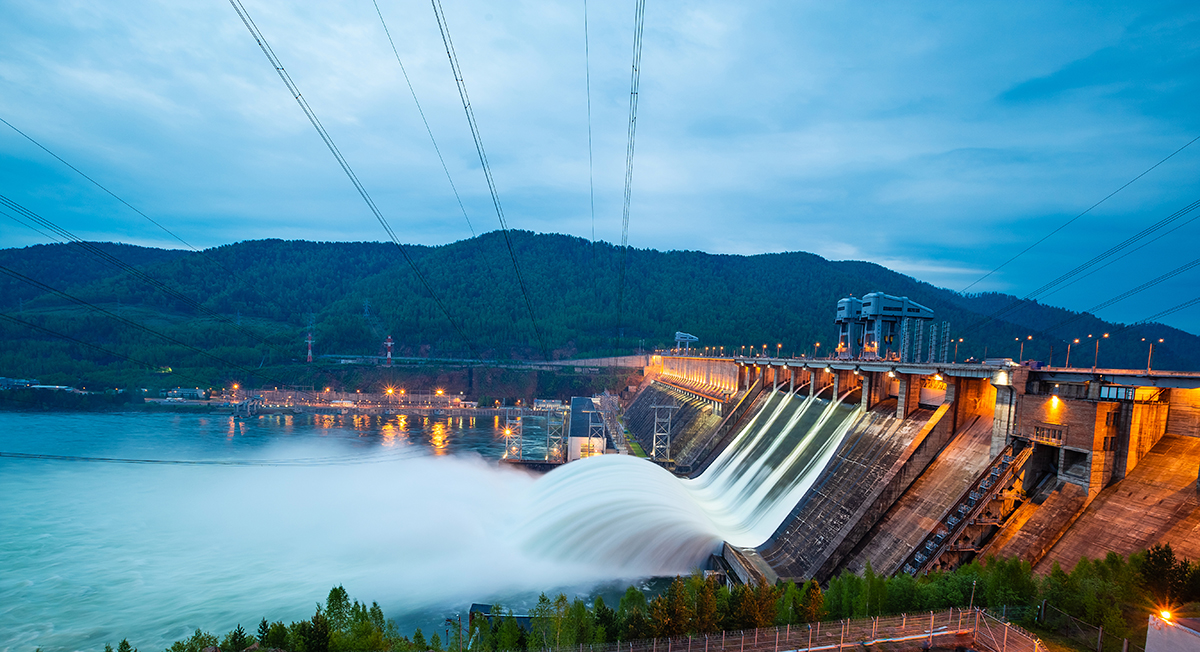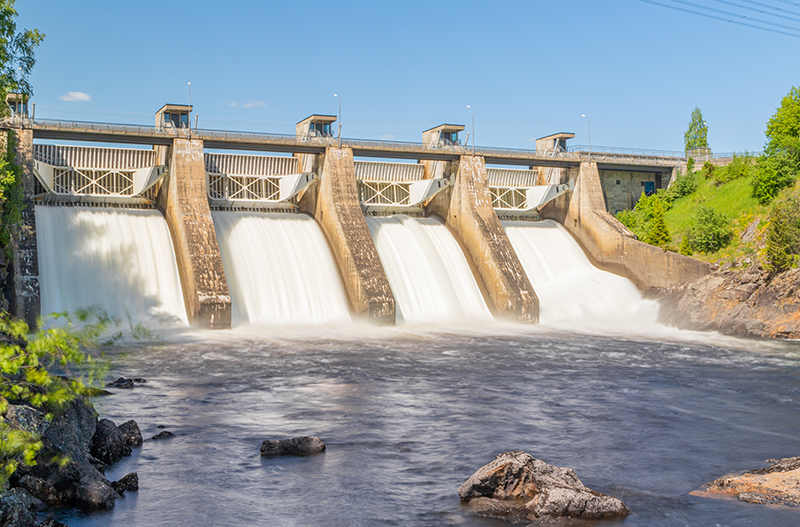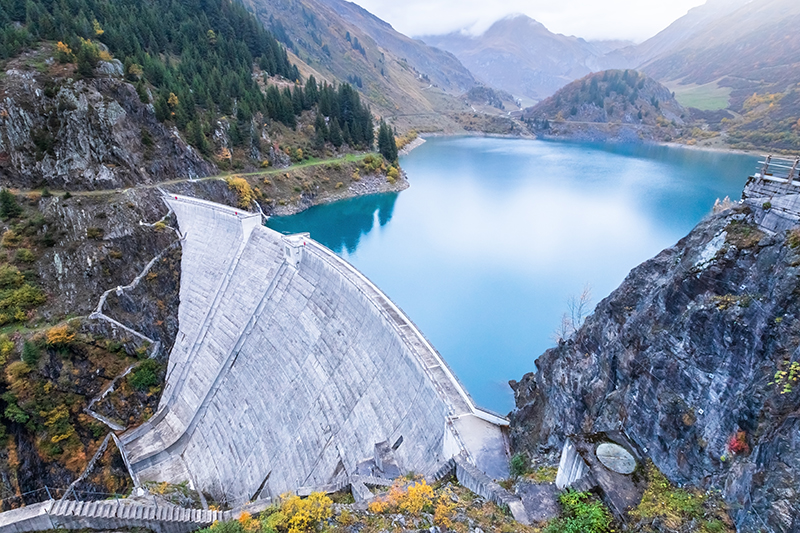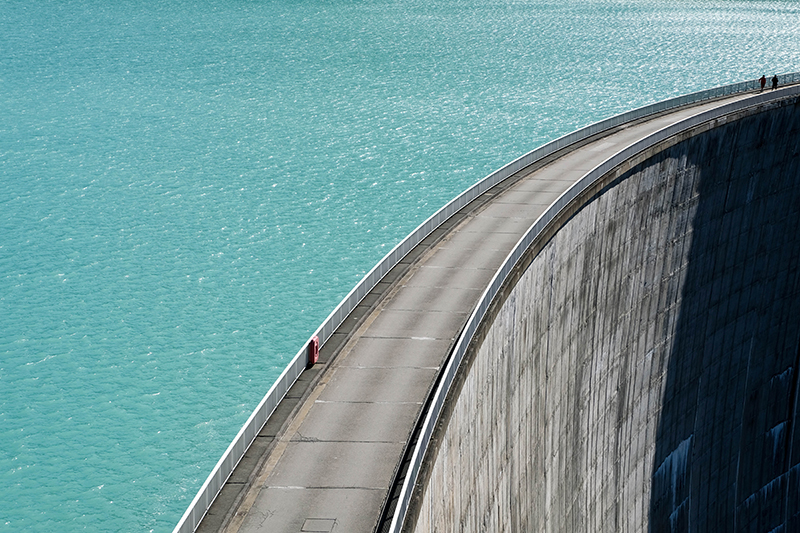Hydropower

Published: Friday, 19 May 2023
Continuing on in our ‘Types of Renewable Energy’ series, we are going to be looking into detail about Hydropower. Hydropower is another type of renewable energy that is seeing increased use at the moment. We usually use hydropower to provide drinking water, water for irrigation and electricity. In this article we will look at how hydropower works and the positives and negatives that come with it.
What is Hydropower?
Hydropower, A.K.A hydroelectric power generates its power using a dam or diversion structure that will alter a natural flow or a river or other bodies of water. Hydropower relies on a constant recharging system to produce the electricity required to give enough to the grid for it to be worthwhile as an energy source.
How it works
Hydropower works very similar to how (Wind power) is generated. The water will travel through a pipe system which will then spin the turbine which in turn will spin the generator that generates the electricity. The water will then travel out and back into the stream so no water will be wasted. These systems will usually have a gate to obstruct or limit the amount of water that goes through the system, this is to avoid overflowing and allows a constant flow of water to go through the turbine or to pass through normally.

How are dams built?
Now that we know how hydropower works, we need to know the process of getting a dam ready. Dam construction is a very complex process which requires a lot of materials and people to make it happen. Although there are many types of dams, these 4 steps will be used for any type of dam.
- Diverting the water
The first step of creating a dam is they need somewhere to move the water. With this they need to find a way to divert the water, this is done by using tunnels. The tunnels will be deep enough that it can carry the water while avoiding surface runoff however, you don’t need to fully empty the river, just enough to make it shallow enough to work in.
- Preparing the dam’s foundation
A dam is built on either a soil or rock foundation, depending on the type of dam. These foundations must be strong enough for it to carry the weight of the dam itself. This is started underground using the rocks and soil that will then be repaired to make sure there is no cracks in the foundation.
- Assemble the main structure
Once the foundation has been built, it is then possible to build the main structure. A foundation will usually be used to create the base structure, this will help to avoid water from leaking over the dam edges. They use concrete and reinforced concrete steel to make the dam more secure against constant water flow.
- Filling the reservoir
The final step is to fill the reservoir. You need a decent amount of water to test whether all the equipment is working and provide changes if necessary.

Advantages
Hydropower offers a great source of renewable energy that can be used and generate all year round. Due to the advantages that hydropower has it has become one of the leading sources of renewable energy around the world. Here are a few reasons why:
Low operating costs
Like most types of renewable energy, the costs to operate the machinery are relatively low. Due to the natural energy source provided we don’t need any fuel to actually generate power as it can be fully sustainable and create its own electricity to run effectively.
Irrigation benefits
Not relevant to the UK as much, but areas with the potential risk of drought, a reservoir is a great way to help deal with this issue. Having a reservoir available provides the local area with a clean and reliable source of freshwater that can help local farms out during the harsher periods of weather.
Pairs well with other renewable's
Due to the reliance of wind for wind power and sunlight for solar power, hydropower is a great complimentary energy generator for other types of renewable energy. During times where we can’t generate as much power from solar and wind power, due to the nature of how a dam or reservoir works and the constant flow of water, we are able to use the electricity generated whenever needed. This gives hydropower the edge on other renewable energies due to its 24/7 ability to generate electricity.

Disadvantages
Hydropower offers a great opportunity in the renewable market; however, it does come with some drawbacks that we will discuss below.
Environment
The largest negative impact that hydropower has is the effect it has on the environment. Hydroelectric plants take up a lot of space, with the buildings, reservoirs, dams, and construction you don’t realise such as new roads and power lines. This can have an adverse effect in the local area and wildlife. Creating the dams will affect the natural flow of water which will disrupt the natural wildlife, mainly fish. Blocking the flow of water can impact the fish migration and can biologically trigger to tell fish when it’s time to migrate when it is time just yet. They have tried to solve this issue however, by creating fish ladders or fish elevators to help fish make it to their migratory place.
Up-front costs
As a drawback to most renewable energies, setting up a hydropower plant costs a lot of money. Dams themselves can take years to construct and that’s not even considering the price to build roads to the dam itself. Once the dam has finally built you usually don’t have to deal with many operating costs, but it is important to note how costly a hydroelectric plant is.
Flood Risk
The biggest risk from hydropower is the threat of a flood. Due to the higher level of elevation if a dam was to ever fail, it could have a catastrophic effect on the local area like the wildlife and nearby towns and villages. A dam failure is usually linked with excess rainfall from hazardous weather like typhoons. Safety measures are put in place with dam however, it is important to be aware of the risk that they can have if they were to fail.

Hydropower is a renewable energy source that is set to be one of the leading sources of our energy in the future. This sustainable method looks set to be one of the leading energy productions in the futures and has come a long way since its beginning.
For more information regarding types of renewable energy check out our blog here.

